
Polaskia is a genus of tree-like cacti reaching 4–5 m high, comprising 2 species. Both present primitive characteristics, but Polaskia chichipe is nearer to Myrtillocactus while Polaskia chende is nearer to Stenocereus. The genus is found in the Mexican states of Puebla and Oaxaca.
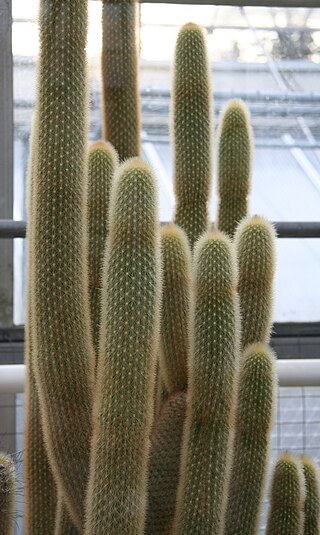
Haageocereus fascicularis commonly known as 'Quisco de la precordillera de Arica' is a species of cactus from the family Cactaceae. It is endemic to southern Peru and northern Chile.
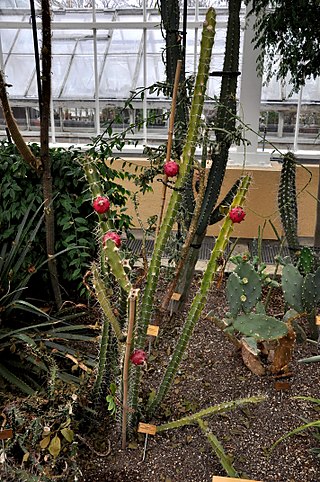
Harrisia bonplandii is a species of cactus. The cactus plants in the Gran Chaco are generally called tuna and this specific variety reina de la noche. Fruits and roots are edible and well known to the native nations of the Gran Chaco.
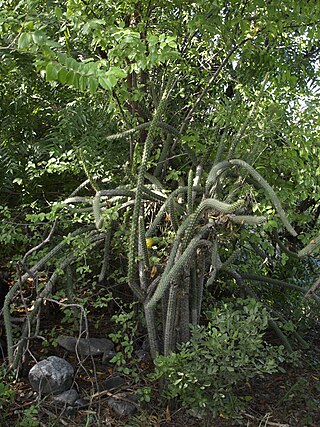
Harrisia divaricata is a species of cactus endemic to Hispaniola.

Harrisia martinii, commonly called the Martin applecactus, is a species of night-blooming, rope-like cacti native to South America. With large showy flowers that attract the hawk moth, it is considered by some a useful landscape plant in areas that do not freeze.
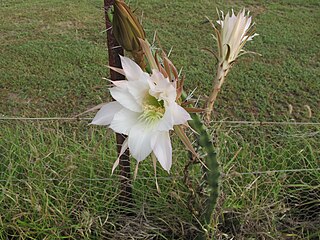
Harrisia pomanensis is a species of cactus.

Lophocereus schottii, the senita cactus, is a species of cactus from southern Arizona and north-western Mexico, particularly Baja California and Sonora.

Pelecyphora macromeris, the nipple beehive cactus, is a species of cactus in the United States and Mexico. In the Chihuhuan Desert, it is common and has a wide range.

Acanthocalycium thionanthum is a species of Acanthocalycium from Argentina.

Oreocereus trollii, commonly known as the Old Man of the Andes cactus, is a species of cacti native to Argentina and Bolivia. Though listed as Least Concern by the IUCN, the plant is collected extensively, and in some areas is threatened.
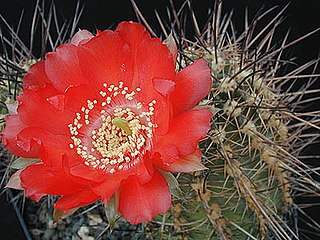
Echinopsis haematantha, is a species of Echinopsis found in Argentina and Bolivia.
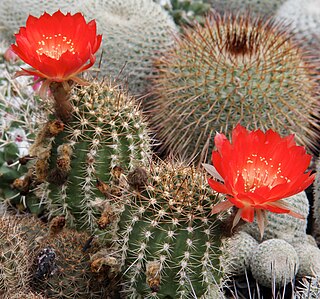
Lobivia hertrichiana, is a species of Lobivia found in Bolivia and Peru.
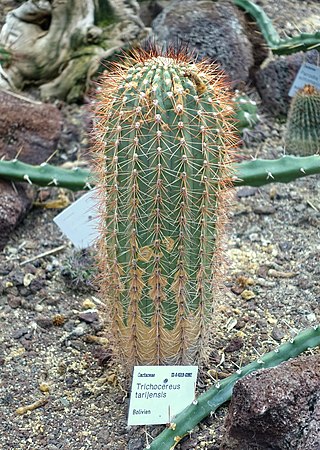
Soehrensia tarijensis, is a species of Soehrensia, in the cactus family. It is native to Bolivia and northwestern Argentina.

Lobivia schieliana, is a species of Lobivia found in Bolivia and Peru.
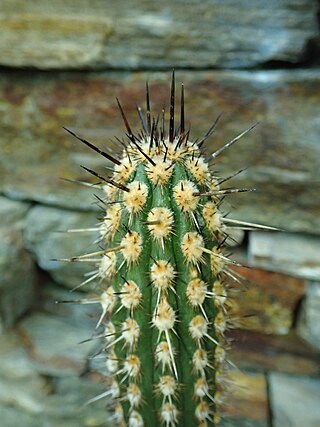
Weberbauerocereus cephalomacrostibas is a species of cactus in the family Cactaceae. It is found in Arequipa Department, Peru and consists of 2 subpopulations.
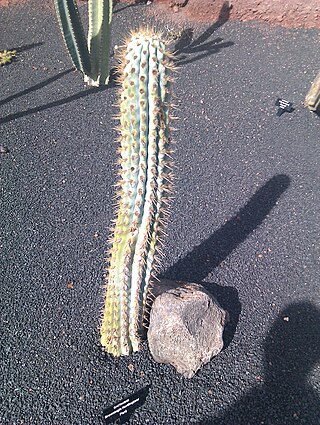
Browningia hertlingiana is a species of Browningia found in Peru.
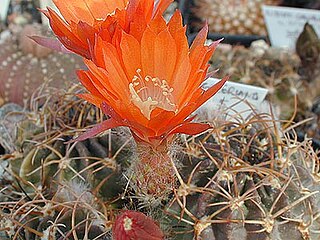
Lobivia tegeleriana is a species of Lobivia found in Peru.
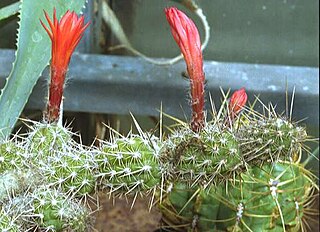
Loxanthocereus sextonianus is a species of Loxanthocereus found in Peru.
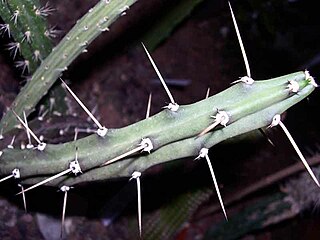
Harrisia regelii is a species of cactus endemic to Argentina and Uruguay.

Harrisia eriophora is a species of cactus found in Cuba.




















